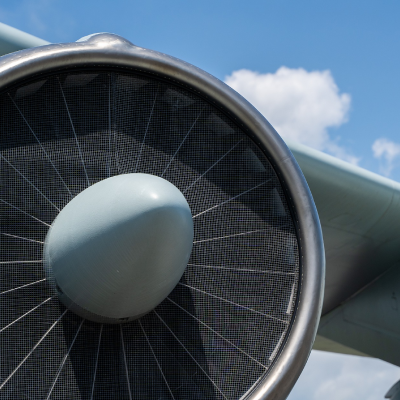Our flight simulator is a unique facility in academia due to its dual-pilot cockpit and modular systems architecture, which allow it to be configured to meet wide ranging testing requirements for research focused on large civil and military transport aircraft.
Very few academic organisations in the world have such a versatile facility. The fixed-base simulator emulates a large transport aircraft flight deck, which allows us to focus on problems ranging from those posed by highly automated flight decks to handling qualities of novel aircraft configurations.
Our engineering research flight simulator is generic and reconfigurable to enable rapid reconfiguration between aircraft types and systems. This also allows the evaluation of aircraft handling characteristics and assessment of novel system designs.
A comprehensive suite of near and real-time simulation and visualisation environments are continuously being developed at Cranfield to support our research activities in flight dynamics, control and simulation along with other work focusing on aeroelasticity challenges posed by large aircraft. The facility allows our researchers to focus on problems related to highly automated flight decks, where the integration of flight control laws and pilot displays for situational awareness can only be investigated using such an engineering research simulator.
Summary of applications
Real-time simulation and visualisation using reconfigurable flight dynamic models are implemented in a MATLAB/Simulink environment, which provides students with the ability to rapidly test what they have learned in class. Researchers can also rapidly assess the effectiveness of their designs or solutions. This environment is integrated with easily upgradable COTS based technologies that drive the audio and visual systems together with other aircraft systems models.
The simulator is based on a modular concept with numerous PCs each of which run a model of a particular aircraft system. This provides a rapid prototyping environment, where system modules can be quickly replaced, developed and implemented using industry standard design methodologies.
The unique engineering research flight simulation facility enables Cranfield University to undertake a wide variety of research programmes in areas such as avionics, flight control systems, and human factors. Our multi-disciplinary approach to aeronautics provides an opportunity to:
- Investigate future air traffic environments,
- Develop pilot advisory systems,
- Evaluate pilot situation awareness displays,
- Assess the dynamics and handling qualities of future aircraft concepts, and associated flight dynamics and control challenges through piloted studies.
Using the facility
The simulator is used by several departments within the University and industry clients. It is also used within European Commission Collaborative Framework projects. The simulator is going through a re-development phase to enhance its capabilities. The aim is to carry out air traffic management (ATM)-related research both within the UK and with international collaborators, such as the CAA and National Air Traffic Services (NATS).
Currently, the main work being undertaken is for the EU programme ‘FLYSAFE’. The objective of this project is to design a complete Next Generation Integrated Surveillance System (NG ISS). This addresses threats associated with adverse weather conditions, traffic conflict and terrain avoidance and will provide improved pilot situation awareness.

